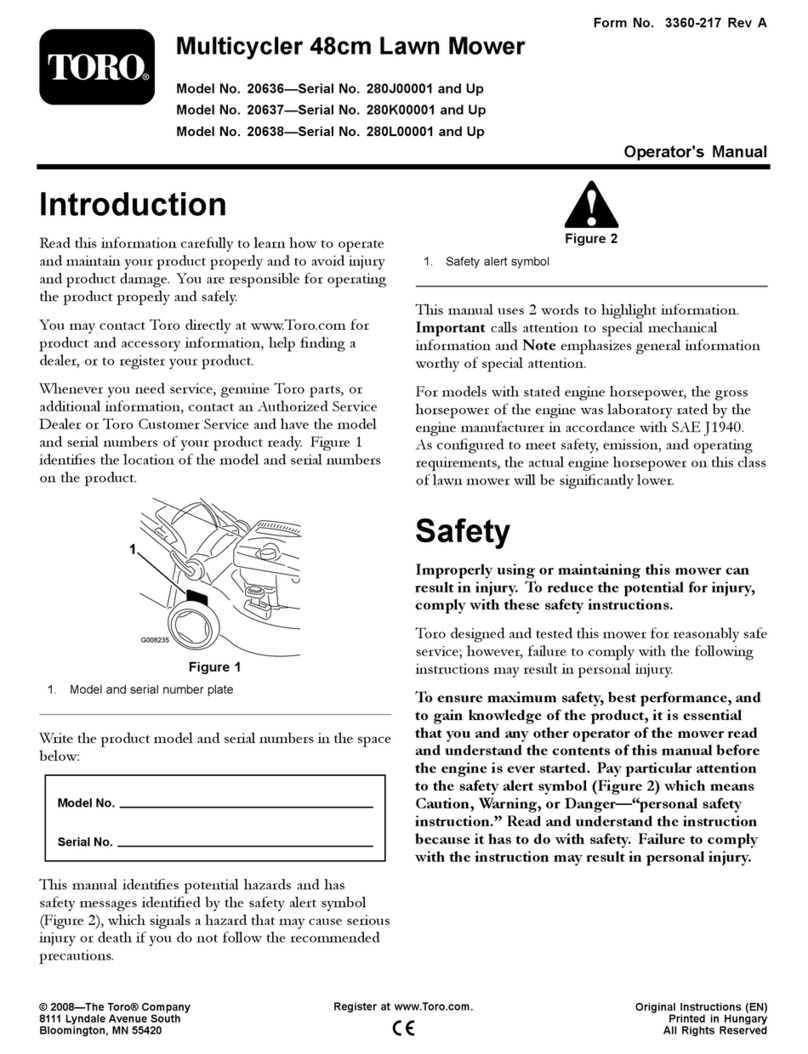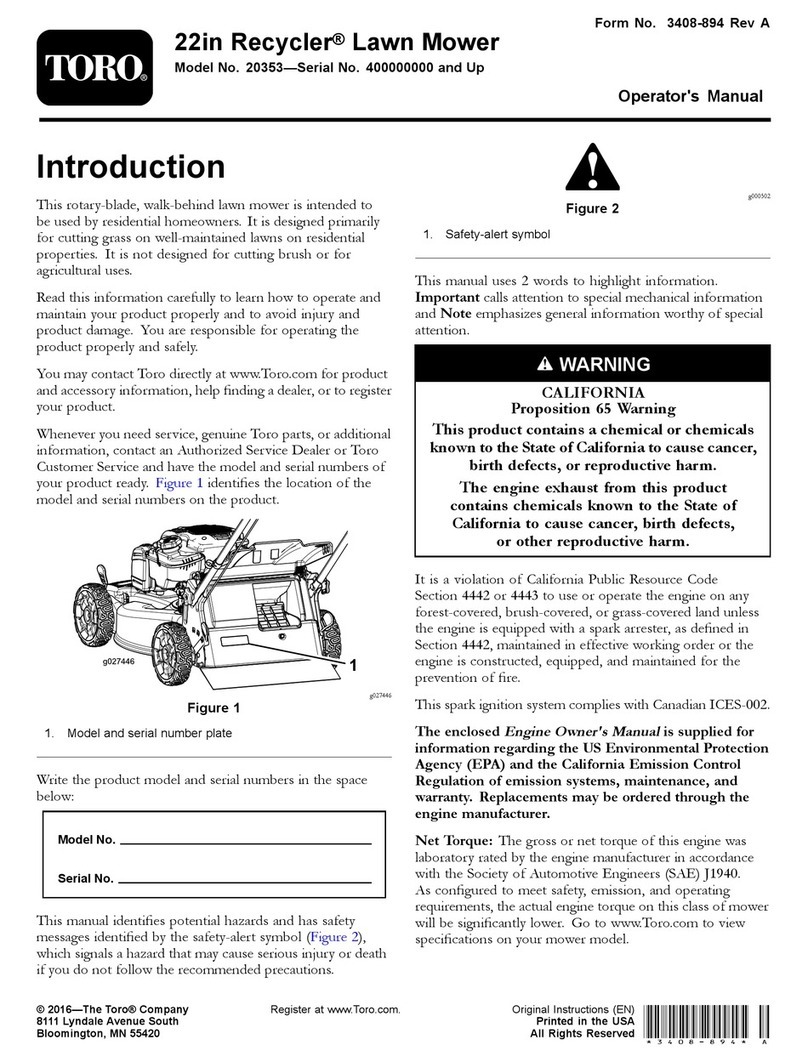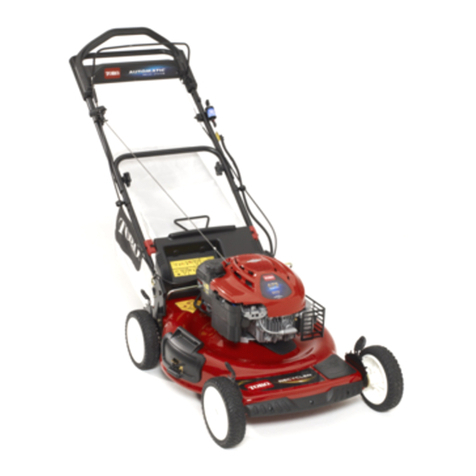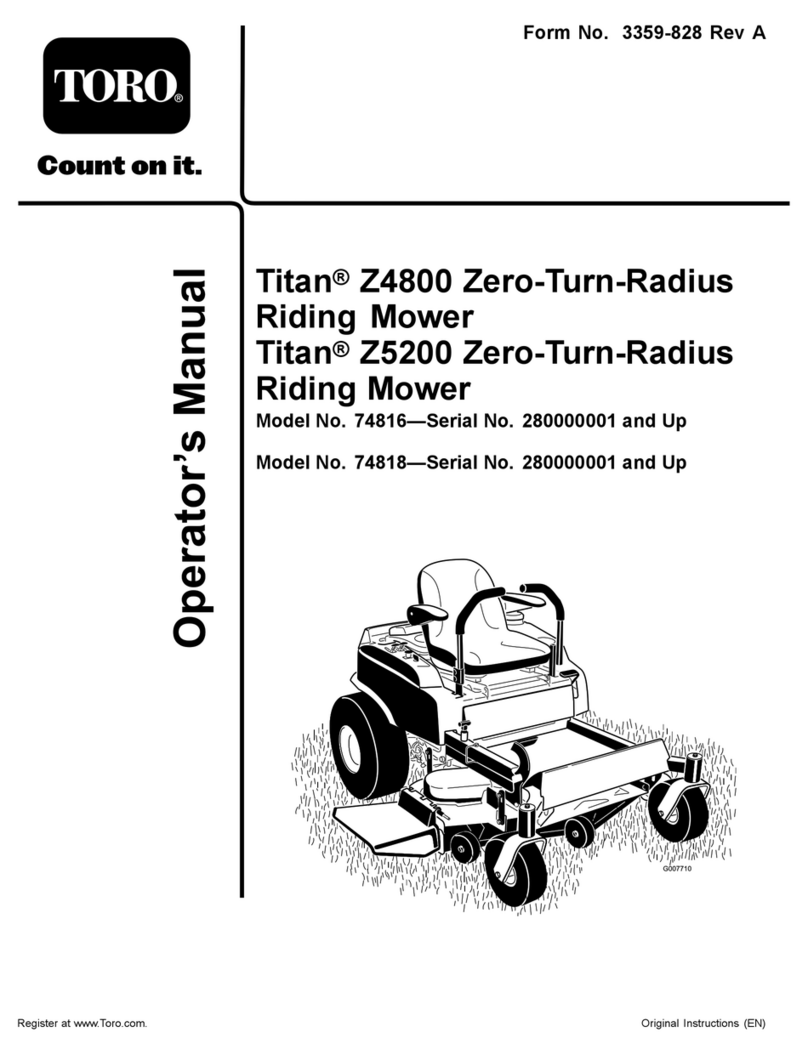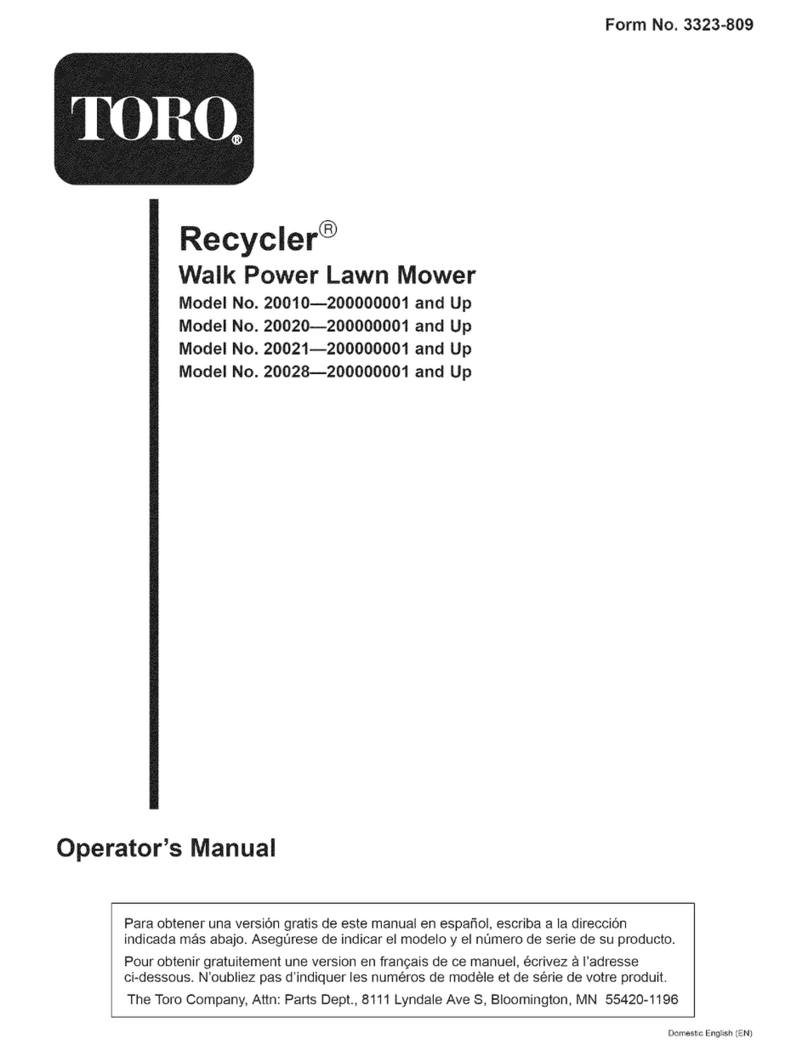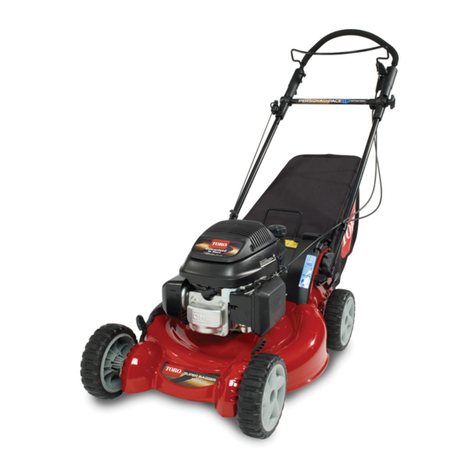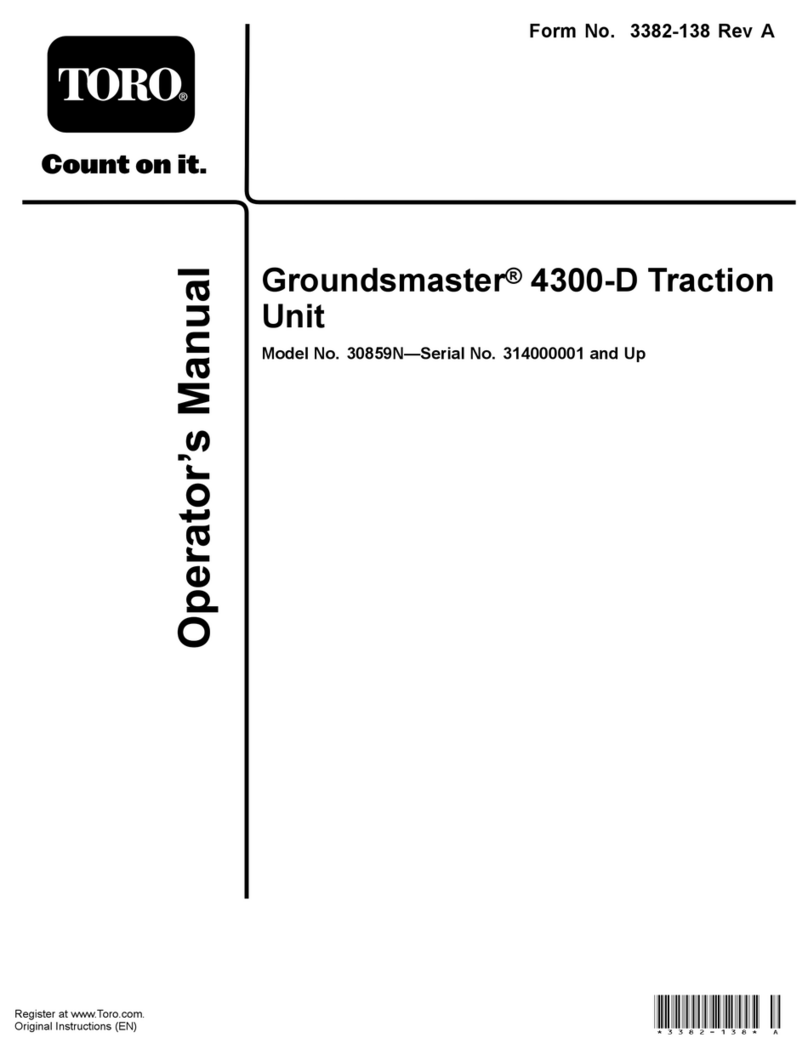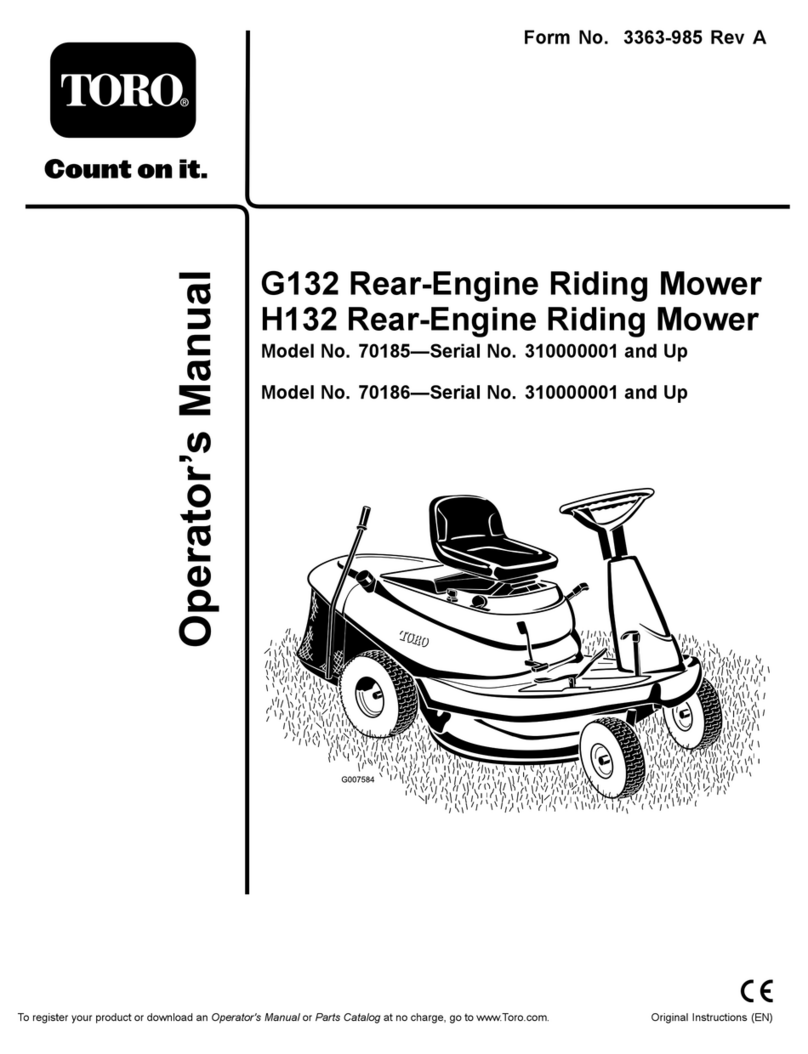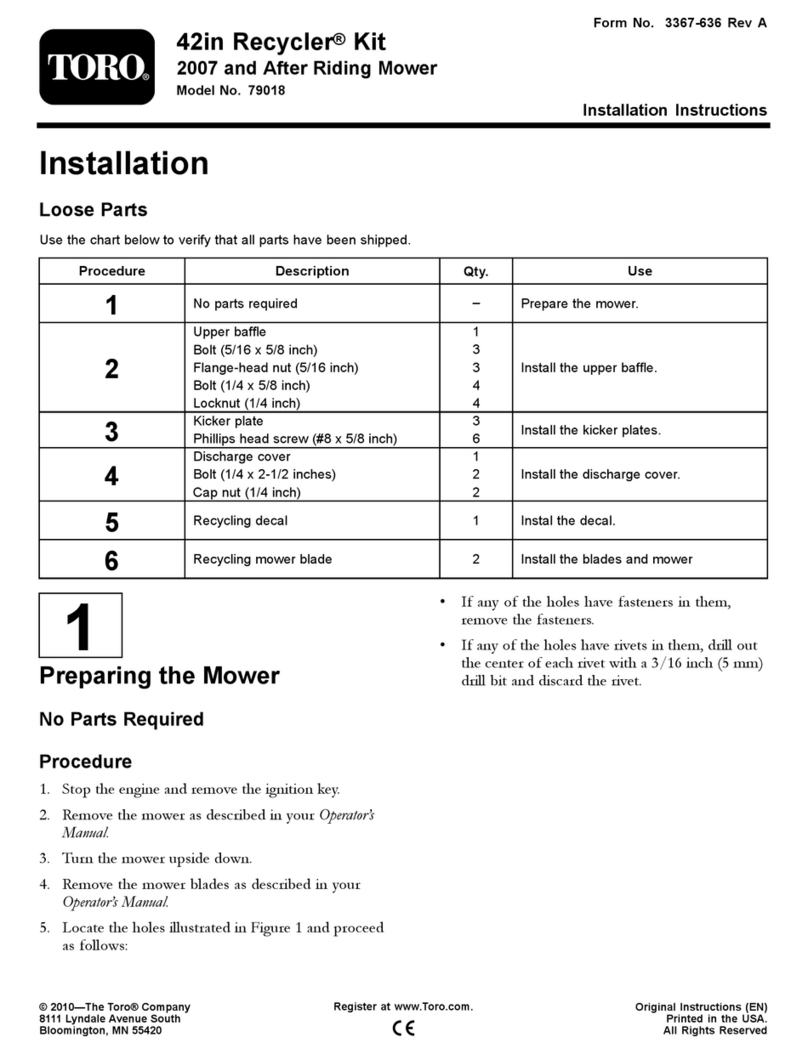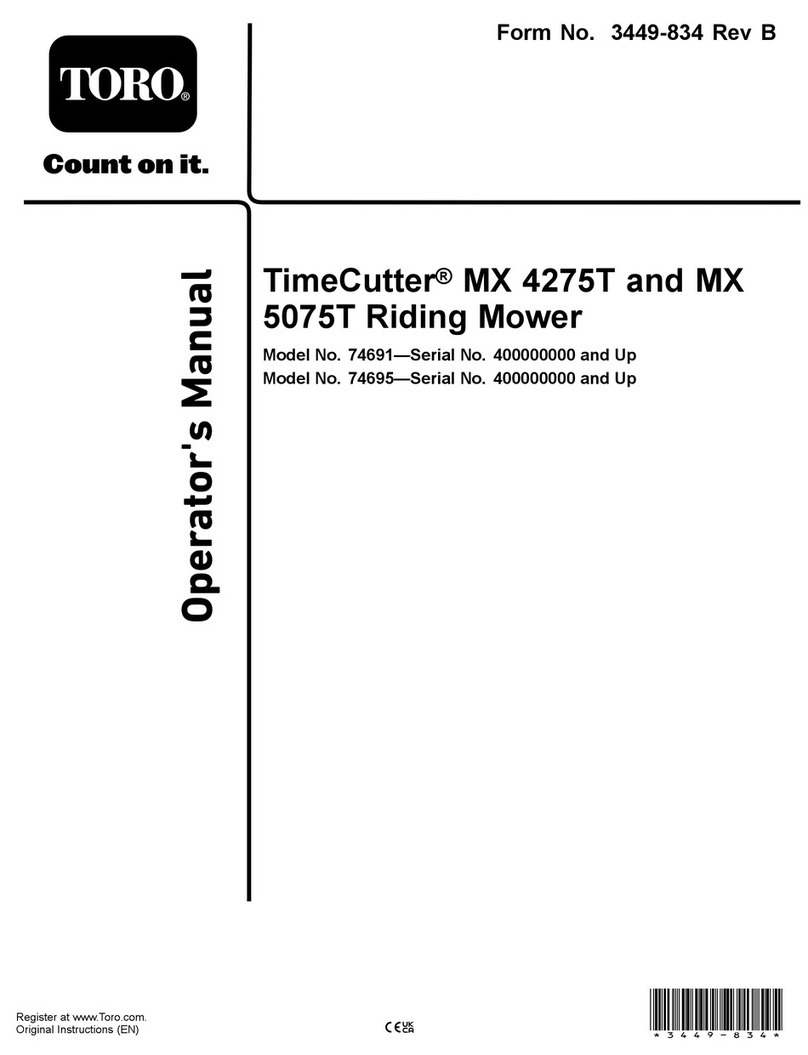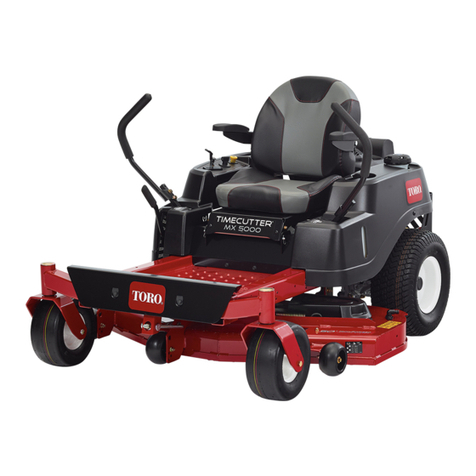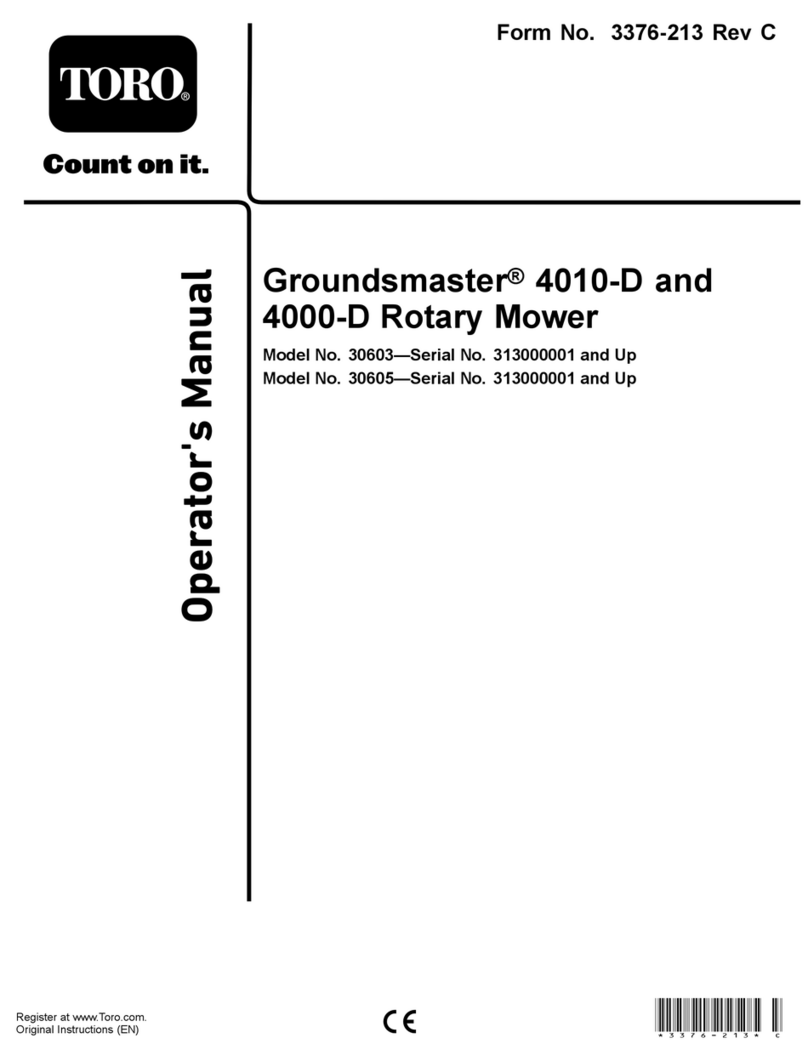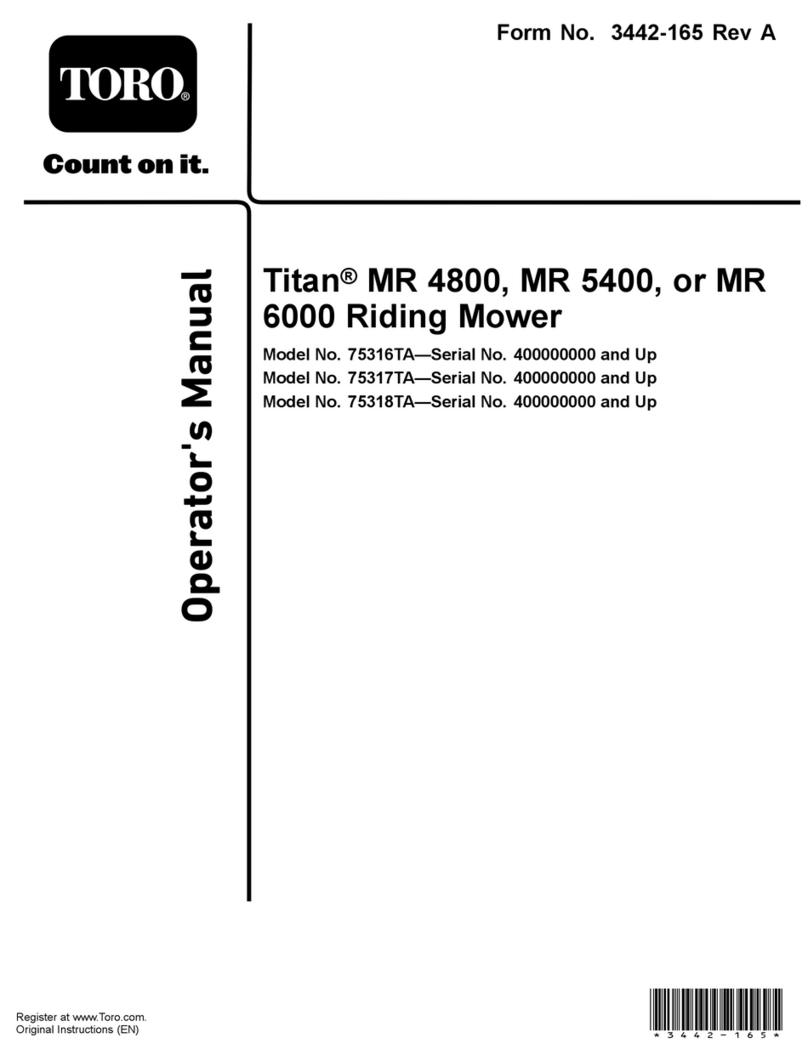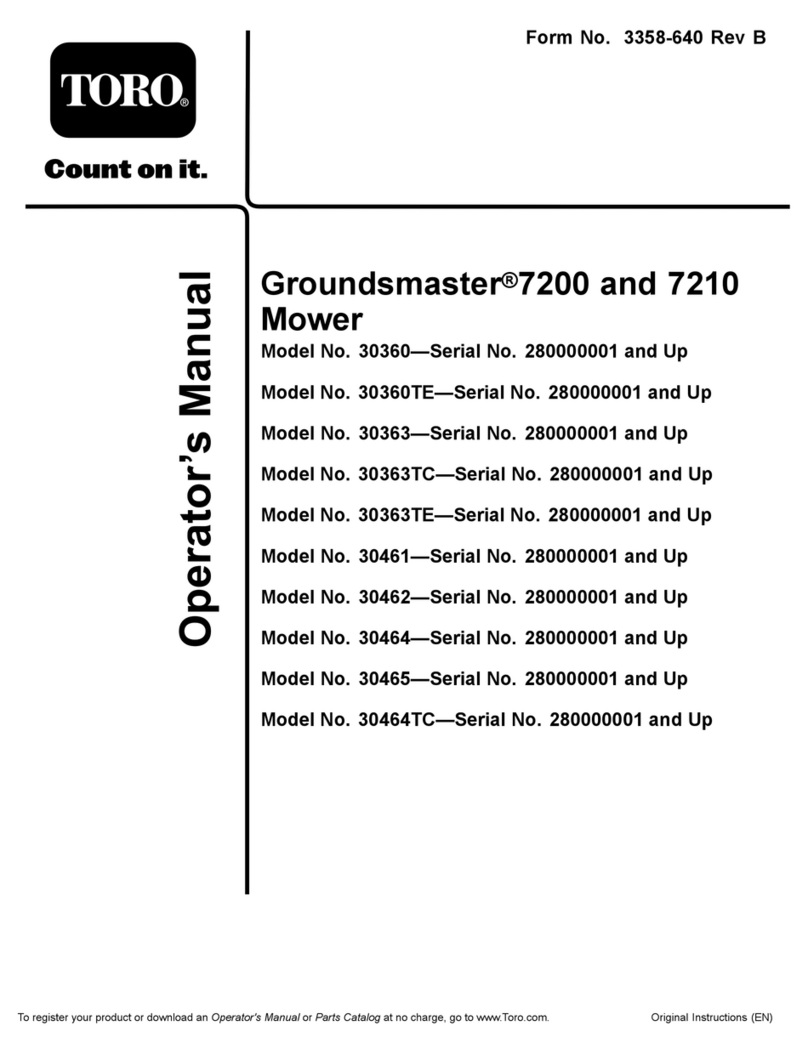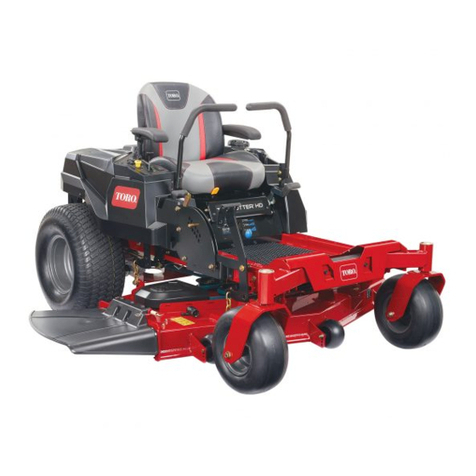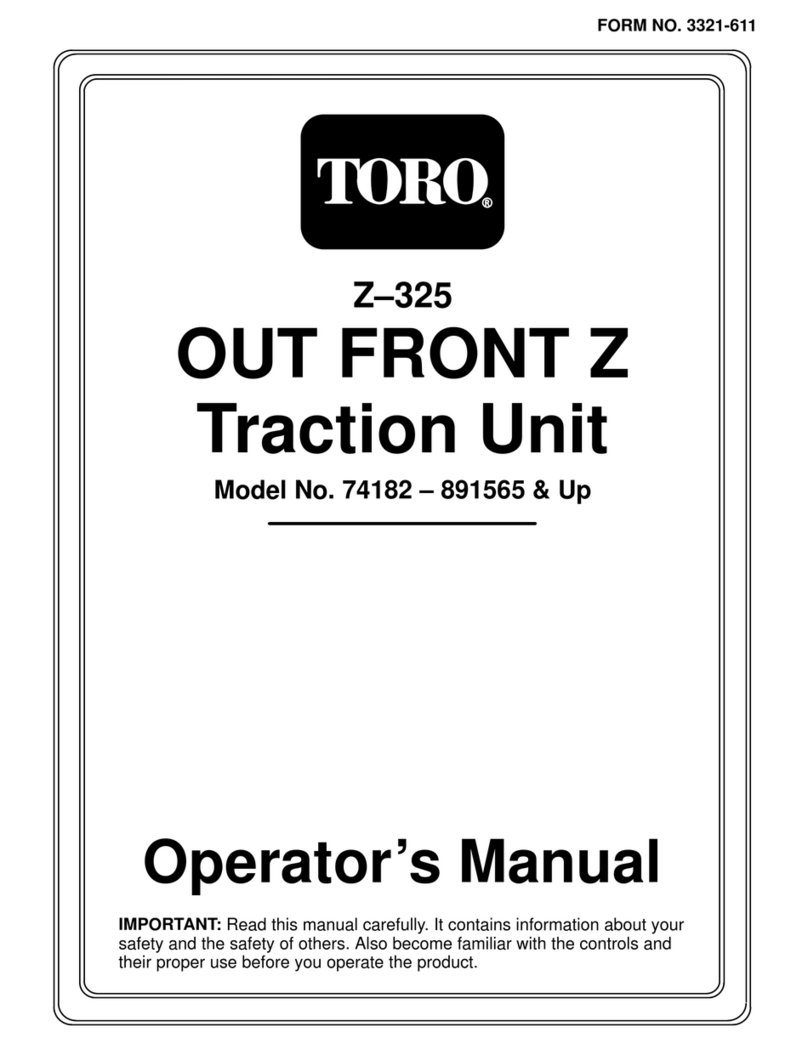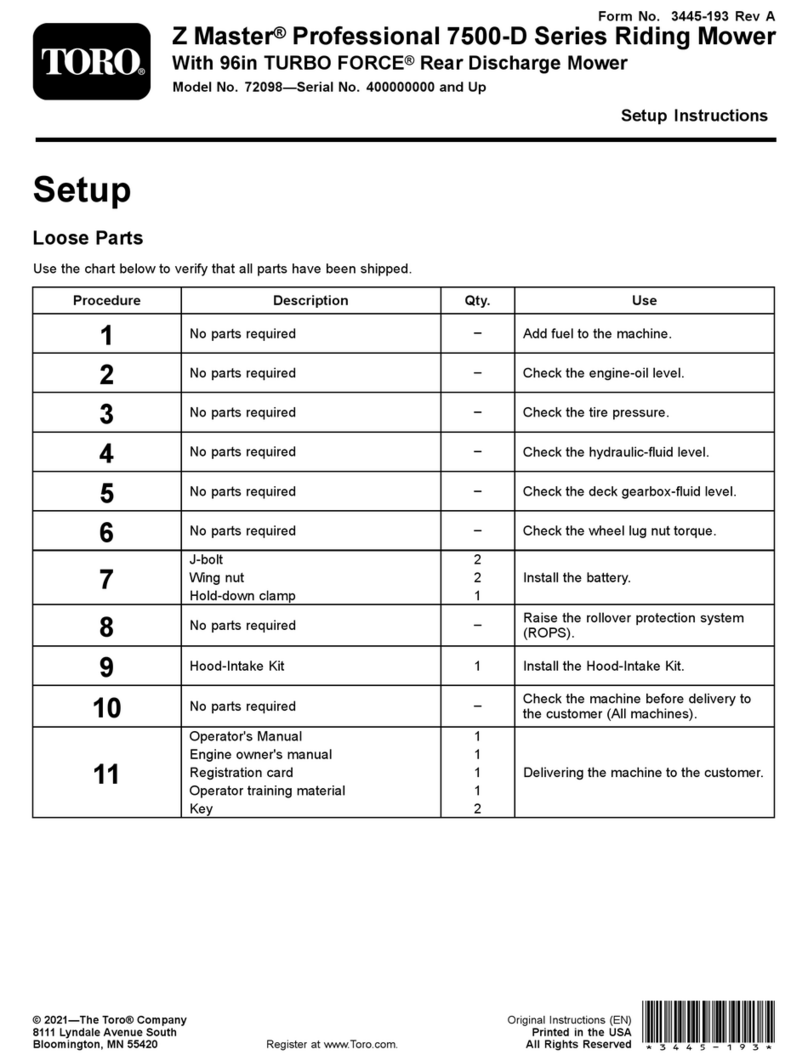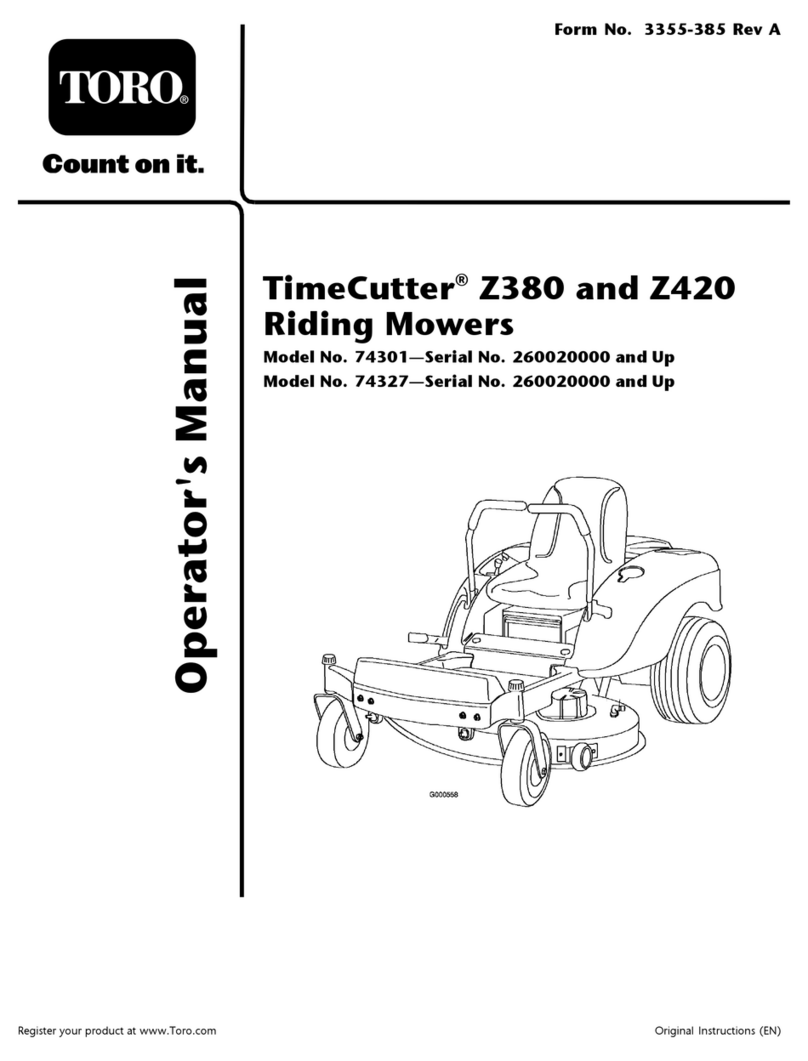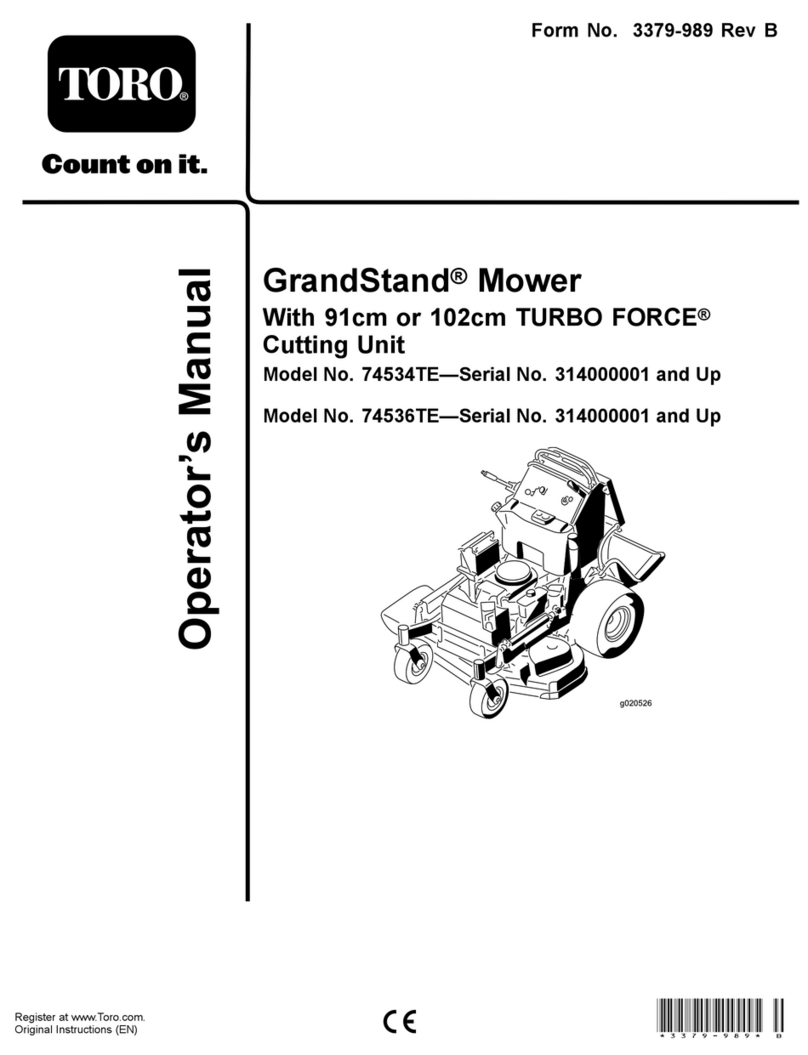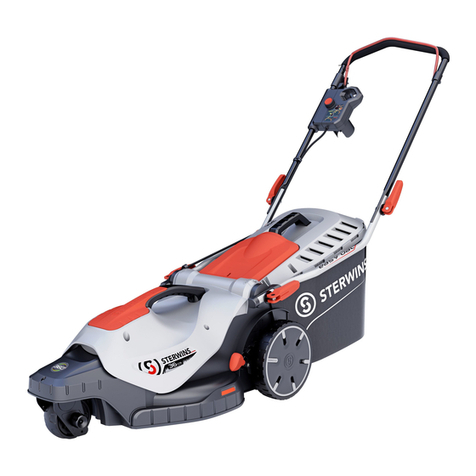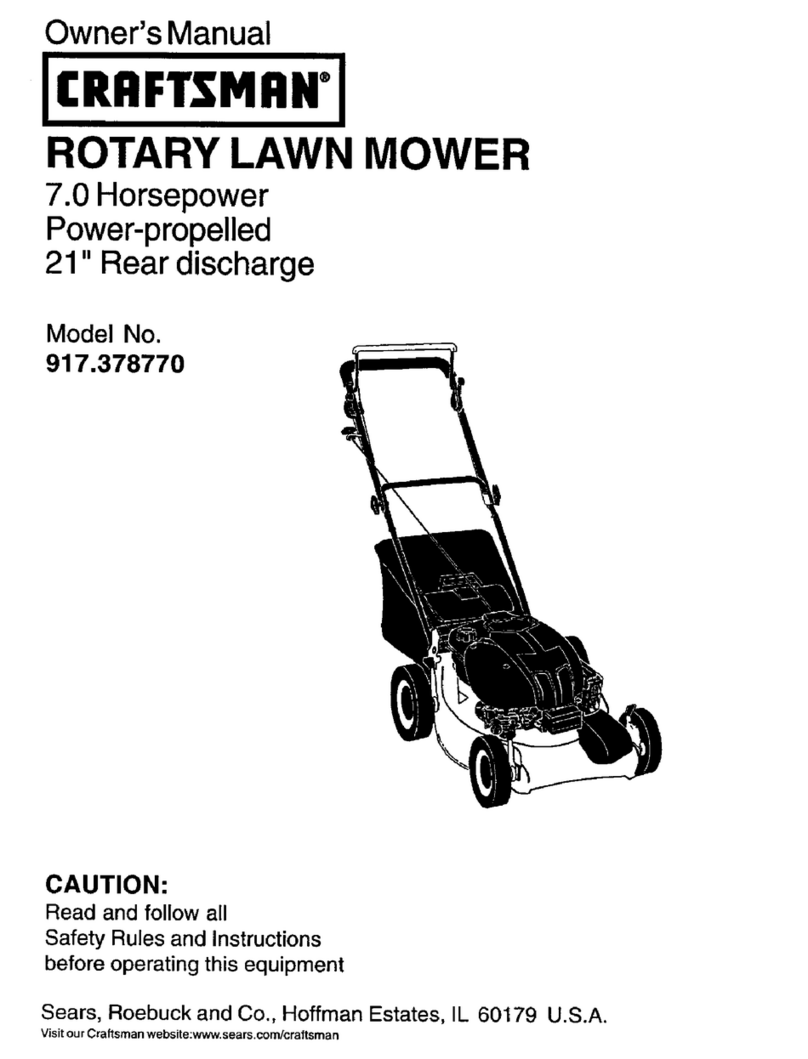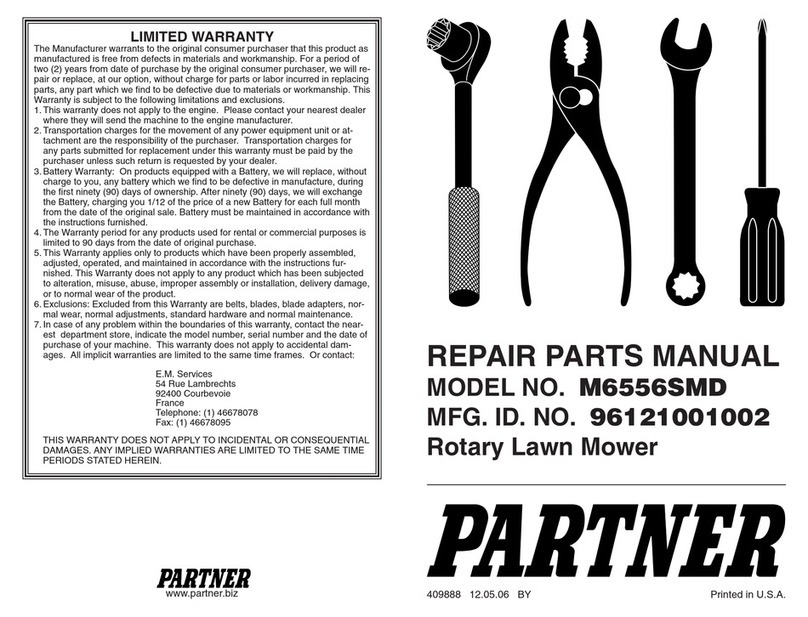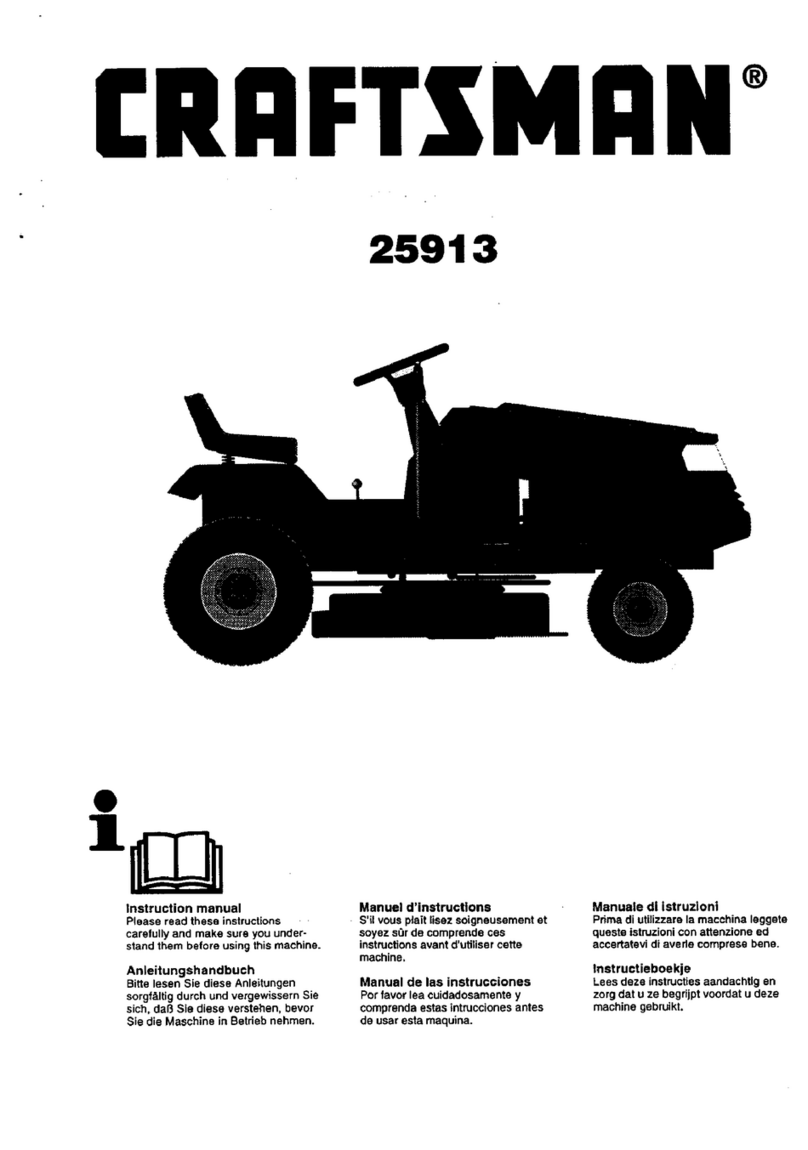
5
•Reduce the throttle setting during engine run-out and, if
the engine is provided with a shut-off valve, turn the
fuel off at the conclusion of mowing.
•Keep hands and feet away from the cutting units.
•Look behind and down before backing up to be sure of
a clear path.
•Slow down and use caution when making turns and
crossing roads and sidewalks. Stop cylinders/reels if not
mowing.
•Do not operate the mower under the influence of
alcohol or drugs
•Use care when loading or unloading the machine into a
trailer or truck
•Use care when approaching blind corners, shrubs, trees,
or other objects that may obscure vision.
Maintenance and Storage
•Keep all nuts, bolts and screws tight to be sure the
equipment is in safe working condition.
•Never store the equipment with fuel in the tank inside a
building where fumes may reach an open flame or
spark.
•Allow the engine to cool before storing in any
enclosure.
•To reduce the fire hazard, keep the engine,
silencer/muffler, battery compartment and fuel storage
area free of grass, leaves, or excessive grease.
•Check the grass catcher frequently for wear or
deterioration.
•Keep all parts in good working condition and all
hardware and hydraulic fittings tightened. Replace all
worn or damaged parts and decals.
•If the fuel tank has to be drained, do this outdoors.
•Be careful during adjustment of the machine to prevent
entrapment of the fingers between moving blades and
fixed parts of the machine.
•On multi-cylinder/multi-reel machines, take care as
rotating one cylinder/reel can cause other
cylinders/reels to rotate.
•Disengage drives, lower the cutting units, set parking
brake, stop engine and remove key and disconnect spark
plug wire. Wait for all movement to stop before
adjusting, cleaning or repairing.
•Clean grass and debris from cutting units, drives,
silencers/mufflers, and engine to help prevent fires.
Clean up oil or fuel spillage.
•Use jack stands to support components when required.
•Carefully release pressure from components with stored
energy.
•Disconnect battery and remove spark plug wire before
making any repairs. Disconnect the negative terminal
first and the positive last. Reconnect positive first and
negative last.
•Use care when checking the cylinders/reels. Wear
gloves and use caution when servicing them.
•Keep hands and feet away from moving parts. If
possible, do not make adjustments with the engine
running.
•Charge batteries in an open well ventilated area, away
from spark and flames. Unplug charger before
connecting or disconnecting from battery. Wear
protective clothing and use insulated tools.
Toro Riding Mower Safety
The following list contains safety information specific to
Toro products or other safety information that you must
know that is not included in the CEN, ISO, or ANSI
standard.
This product is capable of amputating hands and feet and
throwing objects. Always follow all safety instructions to
avoid serious injury or death.
Use of this product for purposes other than its intended use
could prove dangerous to user and bystanders.
Engine exhaust contains carbon monoxide, which
is an odorless, deadly poison that can kill you.
Do not run engine indoors or in an enclosed area.
Warning
•Know how to stop the engine quickly.
•Do not operate the machine while wearing tennis shoes
or sneakers.
•Wearing safety shoes and long pants is advisable and
required by some local ordinances and insurance
regulations.
•Handle fuel carefully. Wipe up any spills.
•Check the safety interlock switches daily for proper
operation. If a switch should fail, replace the switch
before operating the machine. After every two years,
replace all four interlock switches in the safety system,
whether they are working properly or not.
•Before starting the engine, sit on the seat.
•Using the machine demands attention. To prevent loss
of control:
